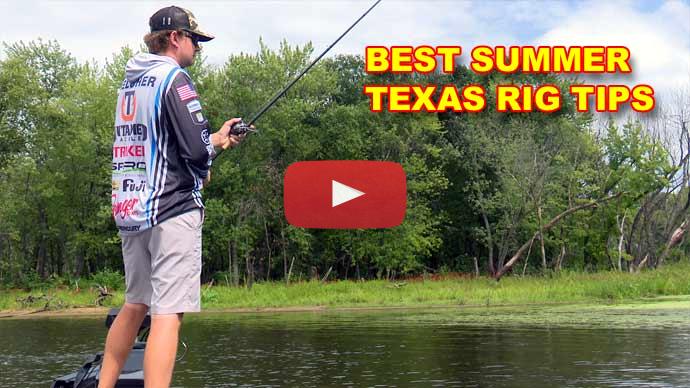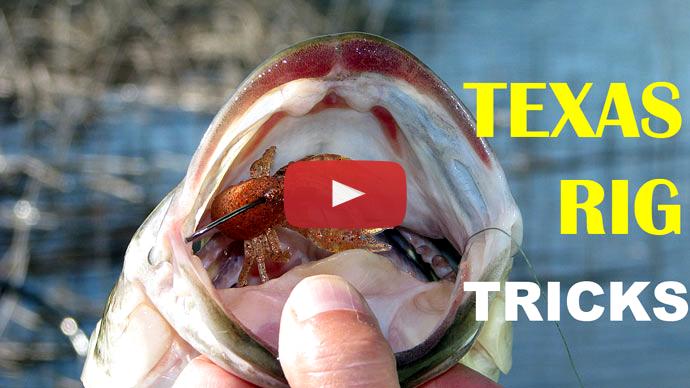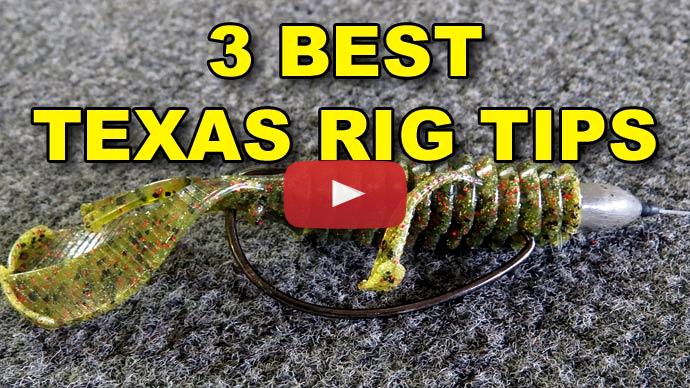All right, so when you move on into the summer-time months of the year, you know, one of the biggest things is just understanding the seasonal movement of fish. I mean, typically after you get through that spawning period of the year, is what I'm gonna call either post-spawn or summer. And when you get into that summer-time of the year, that's when you really gotta start kind of thinking about making some bait changes.
As I mentioned earlier when I'm talking spring-time, a lot of times I'm sizing my baits down, I'm throwing, you know, smaller creature baits like a fighting frog. I'm throwing, you know, smaller creature baits like a little College Craw. But when you get into those summer-time months of the year that is when you want to start bulking your baits up.
One of the biggest things about it is, fish have gone through that spawning period. They've gone through that sluggish state, and then they get to that state where they're feeding back up, and they want to eat a bait that is worth eating. So, one of my first choices is gonna be an 8-inch mag finesse worm. And, you know, this thing comes in so many different colors and can be fished in so many different situations.
I mean, you can fish a Texas rig mag finesse worm out on a bluff. You can fish it in brush piles, you can fish it on ledges. But the biggest thing is with all of the technology we have today, our mapping, you want to put yourself in a situation where those fish are transitioning out of those spawning areas, a lot of times they're gonna pull back out to the secondary points, the main lake points of a lake, and they're gonna set up around standing timber, vegetation on the outside edge, generally brush piles, ledges, anything like that is where you're gonna be able to Texas rig that time of the year.
And like I said, I wanna be throwing bulkier baits. If I'm throwing a bait like the mag finesse worm, I wanna be throwing an 8-incher, I wanna be throwing a 10 or 12-inch plastic worm on a Texas rig. Another bait that I throw a lot, that time of the year on a Texas rig, it's on a Gamakatsu Hybrid Swing Head, it's gonna be a Kamikaze Craw. I'll throw either the 3-inch version or if I get to that position where I feel like I need to bulk the bait up a little bit more, I'm gonna pick up the three-and-a-half, 4-inch version of either the Kamikaze Craw or the Fighting Frog. So, those are the things you want to keep in mind.
Summertime generally requires bigger, bulkier baits. When you get into those summertime punching situations where those fish are in thick matted vegetation, or thick bushes, or things of that nature, I'm generally gonna bulk my punch rig up. I've got a punch rig rigged up here, still like the punch skirt, but I like the Big Bite BFE as a bait that time of the year, something that's got a little bit more bulk, a Big Bite Battle Bug is another bait that I really like to punch that time of the year when it comes to summer-time flipping, punching heavier vegetation.
So, as far as my setups when I am talking about fish at a particular time of year, and right now we're talking about summer-time Texas rigging, it really does become quite critical. I mean, generally, when I'm fishing a bait like this Big Bite mag finesse worm, I'm throwing this bait on a 6 1, 7’4” Falcon medium heavy action rod. I'm generally always gonna be using somewhere between 16 and 20-pound test either Sniper or Shooter Sunline Fluorocarbon. I'm always gonna be using this hybrid worm hook that I've designed for Gamakatsu in the G-Finesse series, and the weights are gonna vary. I mean, I'm gonna generally throw anywhere from a, probably a quarter to a half-ounce Tungsten Gamakatsu either worm weight or flipping weight on these baits to fish on Texas rig.
Probably one of the biggest things that comes in play too is the gear ratio on my reel. Generally, when I get into that summer-time period of the year, I always wanna be throwing a high-speed reel. I wanna be throwing a seven or an eight-to-one gear ratio reel. Something that when I'm fishing specific targets, brush piles, standing timber, the edge of grass, I wanna be able to throw, make my presentation, as soon as I get done making my presentation, I wanna be able to take up line quick, and make another presentation. And also you're making long casts, so when you set the hook on a fish, you wanna be able to take up line quick. So, I'm generally always gonna be throwing a high-speed reel. So a, you know, 6 1, 7’ 4” rod, high-speed reel Bass Pro Shop, Johnny Morris Signature Series and a Big Bite mag finesse worm is gonna be my key setup for summer-time brush piles and target fishing.
When it comes to the flipping application, it's a totally, totally different setup. I mean, generally, I'm always gonna be flipping 50 to 65-pound Sunline FX Braid. I'm gonna be using a Gamakatsu punch weight, which if you look at that punch weight, it is really unique. It's kind of a mushroom shape on the head. So, when you pitch that in, it's actually busting a hole with that mushroom shape head, and it's gonna allow the bait to get through better, especially when you're throwing a big bulky bait, like a Big Bite Battle Bug, a BFE, something that's got some bulk to it. You want to be able to get that bait through the cover and down to the fish.
As I mentioned earlier, I'm gonna be throwing a straight shank heavy cover flipping hook. It's got the hook keeper on it, 50 to 65-pound braid, and I'm gonna beef the rod up. I'm generally gonna be throwing a seven or an eight-power, 7’ 6” to 8-foot rod. I also wanna be throwing a high-speed reel, you know, something that when I pitch in there and I crack one, I can get 'em coming out of that heavy cover fast. So, those are the main things that I look at when I'm either flipping or throwing a Texas Rig offshore in the summertime.
BassResource may receive a portion of revenues if you make a purchase using a link above.



